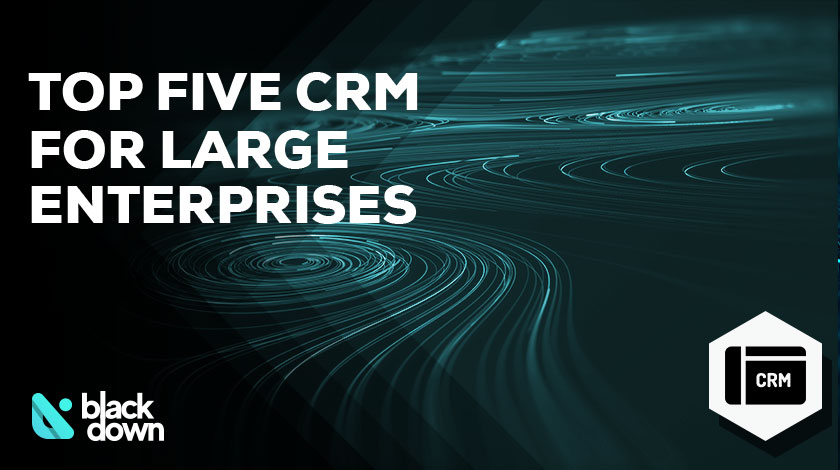In the competitive landscape of today’s business world, large enterprises are increasingly turning to customer relationship management (CRM) systems to streamline operations, improve customer engagement, and drive growth. Best CRM for large business empowers organizations with robust features, seamless integration capabilities, and the scalability to meet the demands of complex business environments.
Dive into this comprehensive guide to discover the key considerations, benefits, and implementation strategies for selecting and leveraging the best CRM for your large business.
The subsequent paragraphs delve into the intricacies of CRM systems, exploring their features, integration options, security measures, scalability requirements, implementation processes, cost implications, and return on investment potential. By understanding these aspects, large businesses can make informed decisions and harness the power of CRM to optimize customer interactions, enhance decision-making, and achieve operational excellence.
Market Overview
The CRM market for large businesses is a rapidly growing and evolving market. This is due to the increasing need for large businesses to manage their customer relationships effectively and efficiently.
Key trends in the large business CRM market include the increasing adoption of cloud-based CRM solutions, the growing use of artificial intelligence (AI) and machine learning (ML) in CRM, and the increasing focus on customer experience (CX).
Challenges Facing Large Businesses in CRM
- Managing large volumes of customer data
- Integrating CRM with other business systems
- Providing a consistent customer experience across all channels
- Measuring the ROI of CRM investments
Major Players in the Large Business CRM Market
- Salesforce
- Microsoft Dynamics 365
- Oracle Siebel CRM
- SAP Hybris
- Adobe Experience Cloud
Features and Functionality
When choosing a CRM system for a large business, it is important to consider the specific features and functionality that will best meet the needs of the organization. Key features to look for include:
- Contact management:The ability to store and manage detailed information about customers, including contact information, demographics, and interaction history.
- Salesforce automation:Tools to automate sales processes, such as lead generation, lead qualification, and opportunity management.
- Marketing automation:Features to automate marketing campaigns, such as email marketing, social media marketing, and content marketing.
- Customer service management:Tools to manage customer support interactions, such as ticketing, knowledge base, and live chat.
- Reporting and analytics:Features to generate reports and analyze data to track performance and identify areas for improvement.
Comparison of Features and Functionality
Different CRM systems offer different features and functionality. It is important to compare the features of different systems to find the one that best meets the needs of the organization. Some of the key factors to consider when comparing CRM systems include:
- Scalability:The ability of the system to handle a large number of users and data.
- Integration:The ability of the system to integrate with other business systems, such as ERP and accounting systems.
- Customization:The ability of the system to be customized to meet the specific needs of the organization.
- Cost:The cost of the system, including the cost of software, implementation, and ongoing support.
Examples of CRM Success
Many large businesses have successfully implemented CRM systems to improve their operations. Some examples include:
- Salesforce:Salesforce is a leading CRM provider that has helped many large businesses improve their sales, marketing, and customer service operations.
- Microsoft Dynamics CRM:Microsoft Dynamics CRM is another popular CRM provider that has helped many large businesses improve their customer relationships.
- SAP CRM:SAP CRM is a CRM system that is designed for large businesses that use SAP ERP systems.
Integration and Customization
For large businesses, integration and customization are crucial aspects of a successful CRM implementation. A well-integrated CRM system can streamline operations, improve data accuracy, and enhance collaboration across different departments.
To effectively integrate a CRM system with other business systems, it is essential to:
- Identify the key systems that need to be integrated, such as ERP, marketing automation, and customer support.
- Map out the data that needs to be shared between these systems.
- Choose an integration platform or middleware that can facilitate the data exchange.
- Configure the integration settings to ensure seamless data flow.
Customization
Customization is equally important for large businesses to tailor the CRM system to their specific needs. This can involve:
- Creating custom fields and objects to capture industry-specific data.
- Developing custom workflows and automations to streamline processes.
- Modifying the user interface to match the company’s branding and improve usability.
- Integrating with third-party apps and services to extend the CRM’s functionality.
By integrating and customizing the CRM system, large businesses can unlock its full potential and gain a competitive advantage in the market.
Security and Scalability

Large businesses require a CRM system that is secure and scalable. Security is important to protect customer data from unauthorized access, while scalability is important to ensure that the system can grow with the business.
There are a number of security features that large businesses should look for in a CRM system. These features include:
- Encryption of data at rest and in transit
- Two-factor authentication
- Role-based access control
- Audit trails
Scalability is also an important consideration for large businesses. A CRM system should be able to scale to meet the growing needs of the business. This means that the system should be able to handle a large number of users and transactions.
The system should also be able to be deployed on a variety of platforms, including on-premises, cloud, and hybrid.
Security Best Practices
In addition to choosing a CRM system with strong security features, large businesses should also implement a number of security best practices. These best practices include:
- Regularly patching the CRM system
- Implementing a firewall
- Using a VPN for remote access
- Educating employees on security best practices
By following these best practices, large businesses can help to ensure that their CRM system is secure and scalable.
Implementation and Support

Implementing a CRM system in a large business requires careful planning and execution. The following steps provide guidance for a successful implementation:
- Define clear goals and objectives:Establish specific goals and objectives for the CRM system implementation, aligning it with the overall business strategy.
- Select the right vendor:Evaluate and select a CRM vendor that meets the specific needs and requirements of the business.
- Create a project plan:Develop a detailed project plan that Artikels the implementation timeline, resources, and responsibilities.
- Data migration and integration:Plan and execute the migration of data from existing systems into the CRM system, ensuring data integrity and accuracy.
- User adoption and training:Implement a comprehensive user adoption and training program to ensure users are proficient in using the CRM system.
- Go-live and monitoring:Launch the CRM system and closely monitor its performance to identify and address any issues or challenges.
User Adoption and Training, Best crm for large business
User adoption is critical for the success of any CRM implementation. The following best practices can help drive user adoption:
- Communicate the value:Clearly communicate the benefits and value of the CRM system to users, explaining how it can improve their productivity and efficiency.
- Provide comprehensive training:Offer comprehensive training programs that cover all aspects of the CRM system, including functionality, navigation, and best practices.
- Encourage user feedback:Regularly gather user feedback to identify areas for improvement and address any concerns or challenges.
Ongoing Support and Maintenance
Ongoing support and maintenance are essential to ensure the CRM system remains effective and efficient. Best practices for ongoing support include:
- Regular updates and patches:Apply regular updates and patches to the CRM system to ensure it remains secure and up-to-date with the latest features.
- Dedicated support team:Establish a dedicated support team to provide technical assistance and resolve any issues or challenges users may encounter.
- Continuous monitoring:Regularly monitor the CRM system’s performance, usage, and adoption to identify areas for improvement and address any potential issues.
Cost and ROI: Best Crm For Large Business
CRM systems for large businesses can vary significantly in cost, depending on the size of the organization, the number of users, and the features required. Typically, these systems are priced on a subscription basis, with monthly or annual fees. The cost can range from a few thousand dollars per year for basic systems to hundreds of thousands of dollars per year for enterprise-level solutions.
Calculating the ROI of a CRM system can be complex, as it involves both tangible and intangible benefits. Tangible benefits include increased sales, improved customer service, and reduced operational costs. Intangible benefits include improved employee productivity, enhanced customer satisfaction, and increased brand loyalty.
To calculate the ROI, businesses should consider the following factors:
- Cost of the CRM system
- Time and resources required for implementation
- Expected increase in sales and customer satisfaction
- Expected reduction in operational costs
By carefully considering these factors, businesses can make an informed decision about whether a CRM system is a worthwhile investment.
Case Studies
Numerous large businesses have achieved a positive ROI from their CRM investment. For example, Salesforce reports that its customers have seen an average increase in sales of 23% and a 24% improvement in customer satisfaction. SAP reports that its CRM customers have seen an average increase in revenue of 15% and a 20% reduction in customer churn.
End of Discussion
Embracing the best CRM for large business is not merely an investment in software but a strategic move towards customer-centricity, operational efficiency, and sustainable growth. By carefully evaluating the factors Artikeld in this guide, large businesses can unlock the full potential of CRM systems and transform their customer relationships, driving business success in the digital age.
FAQs
What are the key features to look for in a CRM system for large businesses?
Large businesses should prioritize CRM systems that offer robust features such as contact management, lead tracking, sales automation, marketing automation, customer service management, reporting and analytics, and integration capabilities.
How can large businesses ensure the successful implementation of a CRM system?
Successful CRM implementation requires a well-defined strategy, user adoption and training, data migration planning, and ongoing support and maintenance.
What are the benefits of using a CRM system for large businesses?
CRM systems provide numerous benefits for large businesses, including improved customer engagement, streamlined sales processes, enhanced decision-making, increased operational efficiency, and a positive return on investment.
